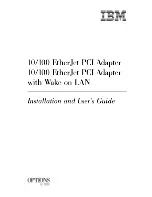
42
Conventional broadcast TV or VCR content provides an "Overscaned"
viewing area in order to ensure that the entire visible screen is used. The
result is that portions of the image along the border are beyond the
physical screen. The actual visual area lost is dependent on the individual
TV model. On the other hand, a PC system display content should be
within the boundaries of the physically viewable screen. This is called
underscan. When the TV is used as the display device in a PC, display
hardware needs to control the image generation circuitry to drive the
underscan timing to the TV.
Besides generating interlaced timing, hardware may have the option to
drive non-interlaced timing to the TV. A non-interlaced display will
remove much of the flicker effect but reduce the detail of the image.
The interlaced timing of a TV causes a flickering effect on the screen.
Depending on the TV standard and tube phosphor material, the severity of
flicker differs from one brand and model of TV to another. Since TV
content is almost always full-motion video or animation, flicker is not as
noticeable as it is when the screen content is stationary. Flickers are caused
by a television’s low frame rate as well as the interlacing of adjacent scans.
This flicker is most obvious when a particular scan contrasts highly with
the scans directly above and below, such as a black horizontal line on a
white background. This type of flicker can be greatly reduced by
3DImàge985's built-in flicker reduction filter.














































